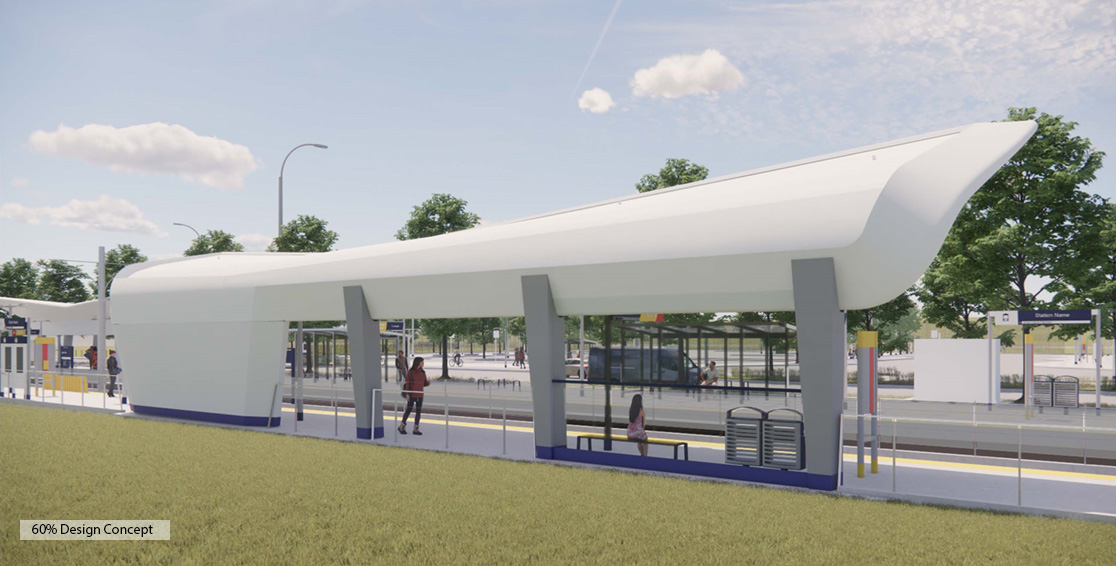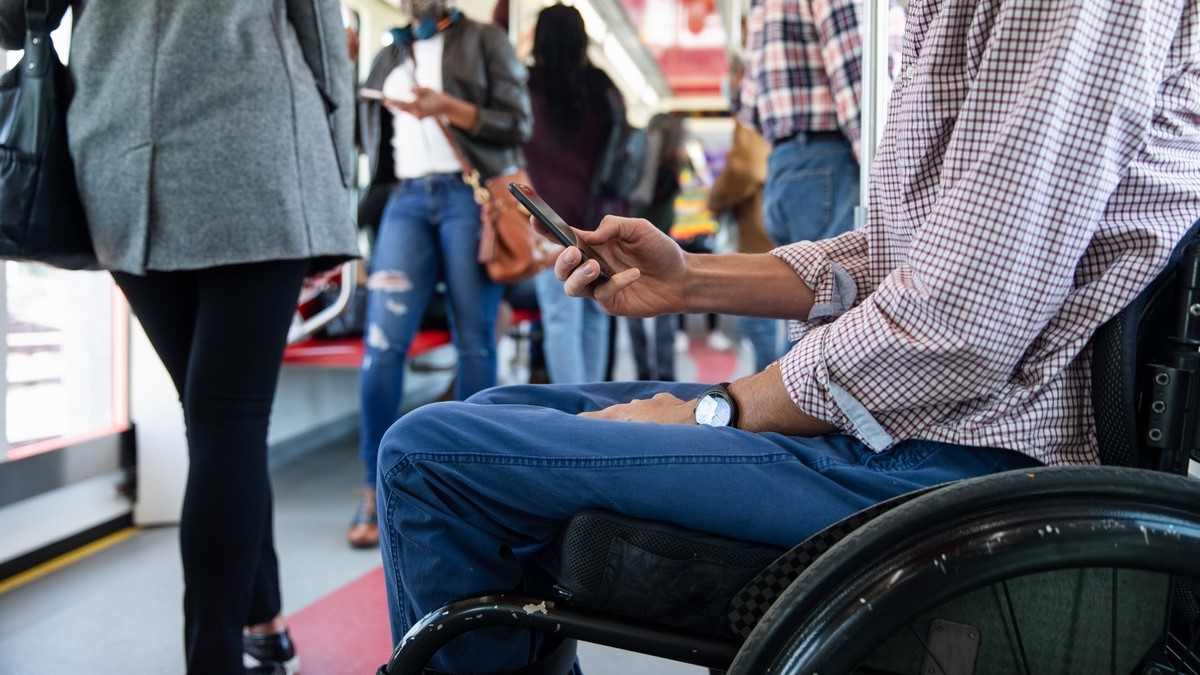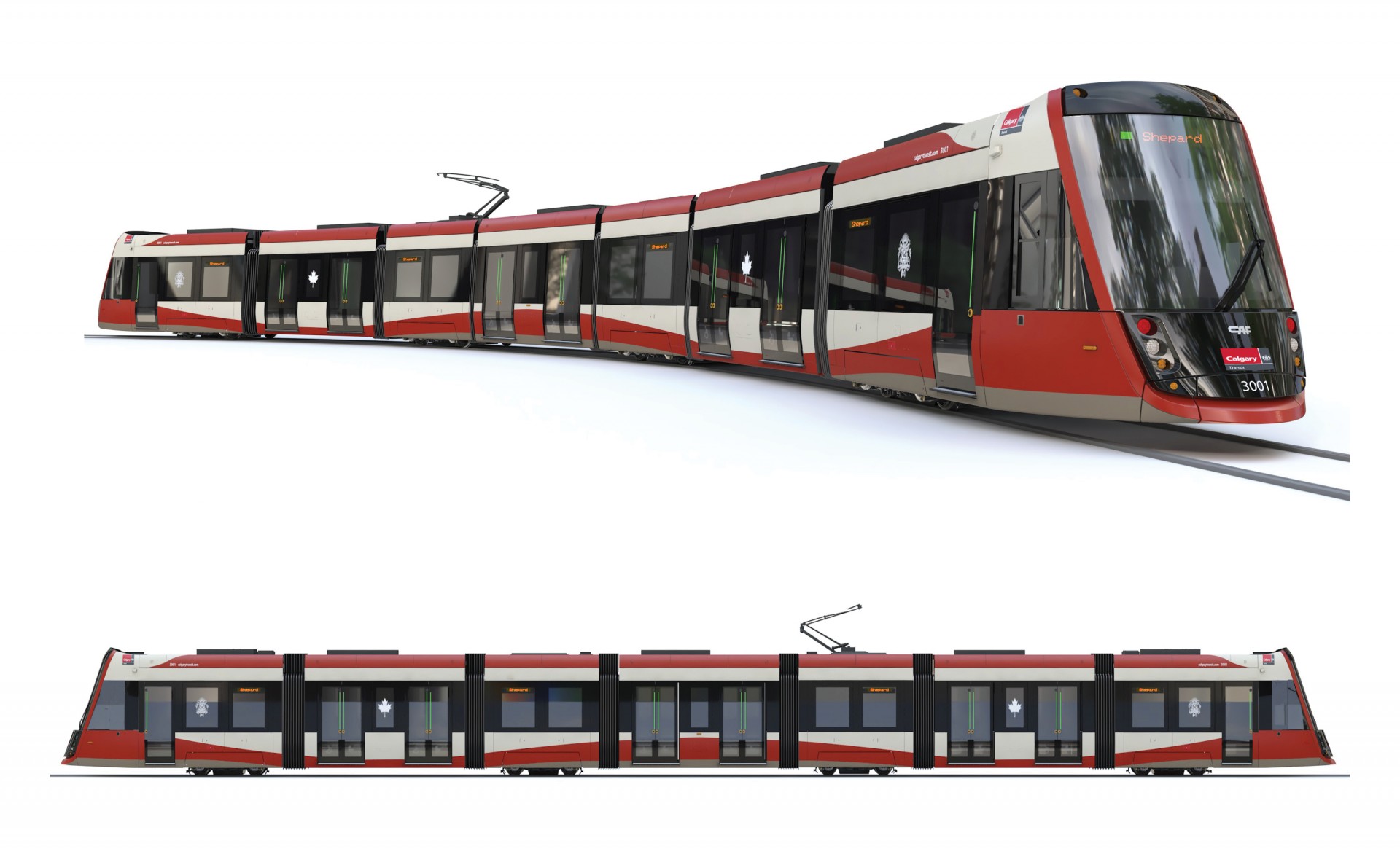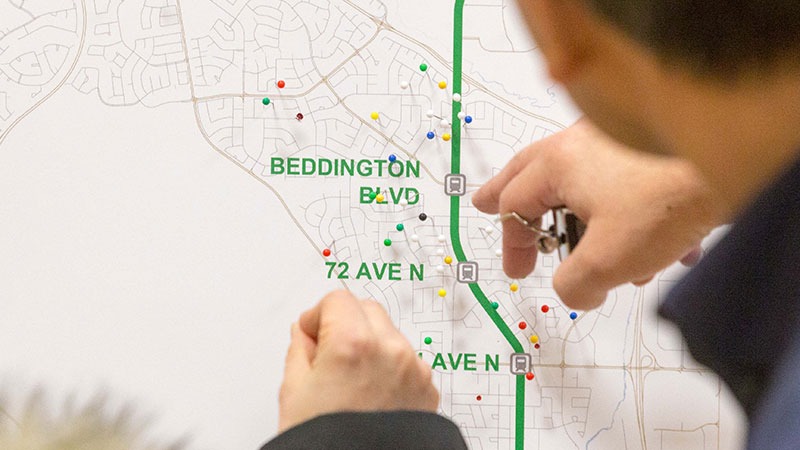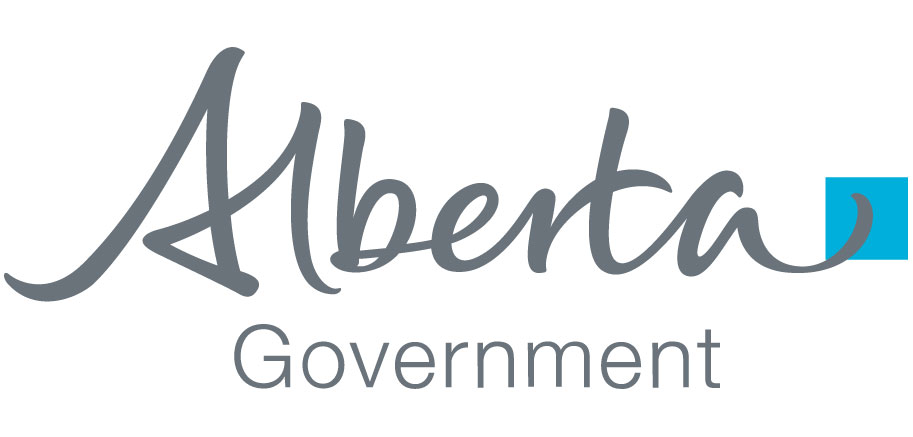
FAQs & Resources
Here are some commonly asked questions about the Green Line and our resource library that contains reports and documents of interest.
About the Green Line
What is the status of the Green Line LRT project?
Phase 1 of the Green Line LRT, from Shepard in the southeast to the Downtown has been approved with $6.248 billion in funding commitments from the City of Calgary, Province of Alberta, and Government of Canada.
The City of Calgary is responsible for delivering the project, with construction of the SE Segment now underway. Contracts are already being awarded to local construction companies, and more than $3 billion in additional tenders will be released to the market in 2025 and 2026.
What is Phase 1, the SE Segment and the Downtown Segment?
Phase 1 includes both the SE Segment and the Downtown Segment and will deliver:
- 17.2 kilometres of twin-track LRT infrastructure
- 12 new stations
- 3 Park and Ride lots
- 1 maintenance and storage facility,
- 28 new modern low-floor light rail vehicles
SE Segment
The SE Segment, from Shepard to the future Event Centre/Grand Central Station, will build the first 10 stations and 16 kilometres, before connecting with the future Downtown Segment and into the existing Red and Blue LRT Lines.
Construction on the SE Segment began in June 2025.
Downtown Segment
The City of Calgary is beginning work on a Functional Plan for the Downtown Segment, based on the Government of Alberta's plan and alignment, using 10 Avenue and 2 Street SW. The Functional Plan will advance design, validate the Province’s cost estimates, understand potential impacts to existing infrastructure and ensure the project is broadly supported by Calgarians prior to starting construction.
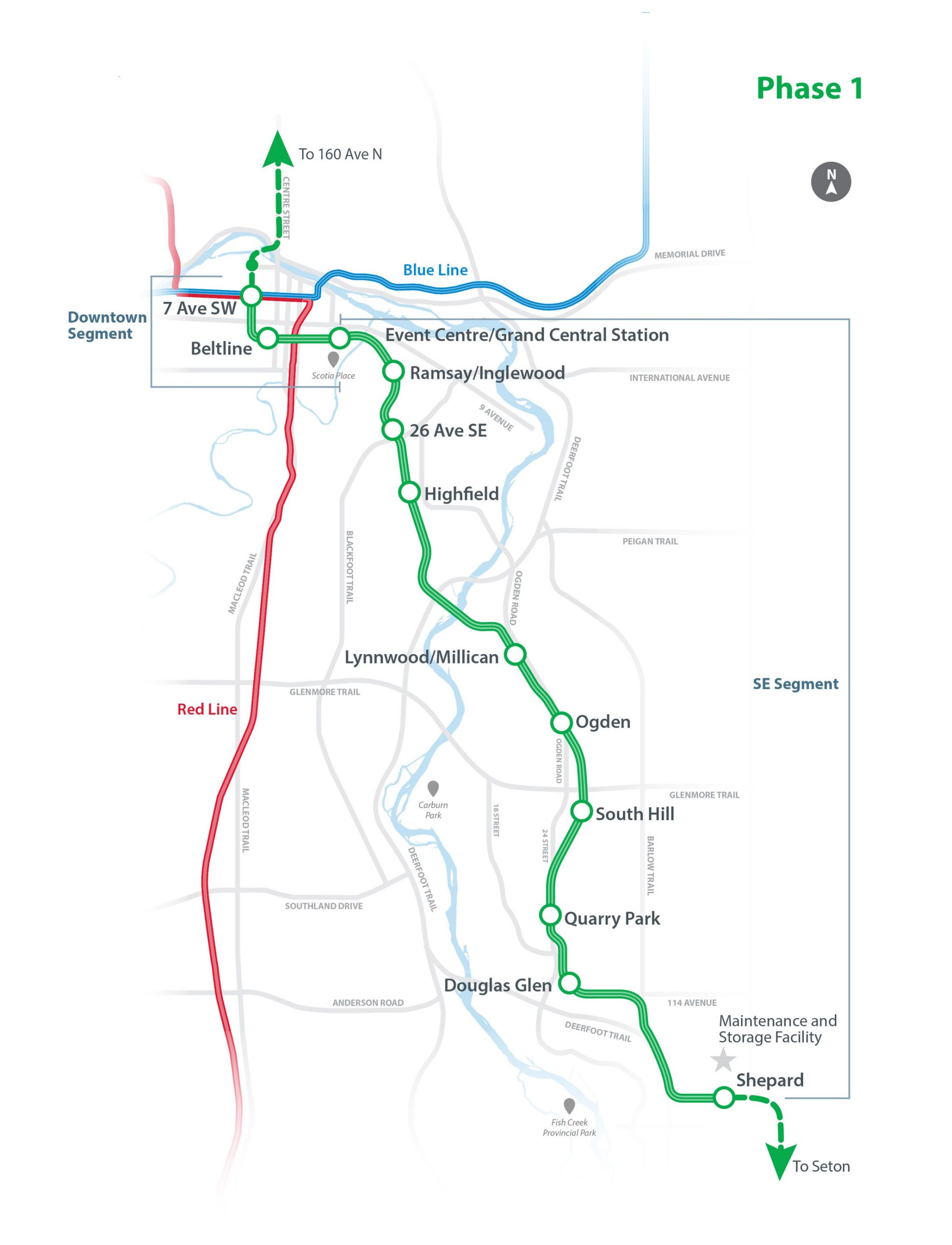
Did Council approve an elevated alignment for downtown?
No, Calgary City Council directed Administration to undertake a Functional Plan for the Downtown Segment, which is currently at 5% design completion.
The Functional Plan will include advancing design, validating the cost estimate from the Province, delivering the impact analysis studies including impact to existing infrastructure, businesses, flood mitigation, noise and vibration, property and traffic modeling that are required before construction can begin and ensuring the project is broadly supported by Calgarians.
Where does it go?
The first phase of the Green Line runs from downtown to Shepard. There are two segments:
- Downtown Segment - includes stations at 7 Ave SW, Beltline and Event Centre/Grand Central Station.
- SE Segment - includes all stations between Event Centre/Grand Central Station and Shepard.
Visit the Future Extensions and Calgary Transit Network pages for details on how Green Line connects into the wider transit network.
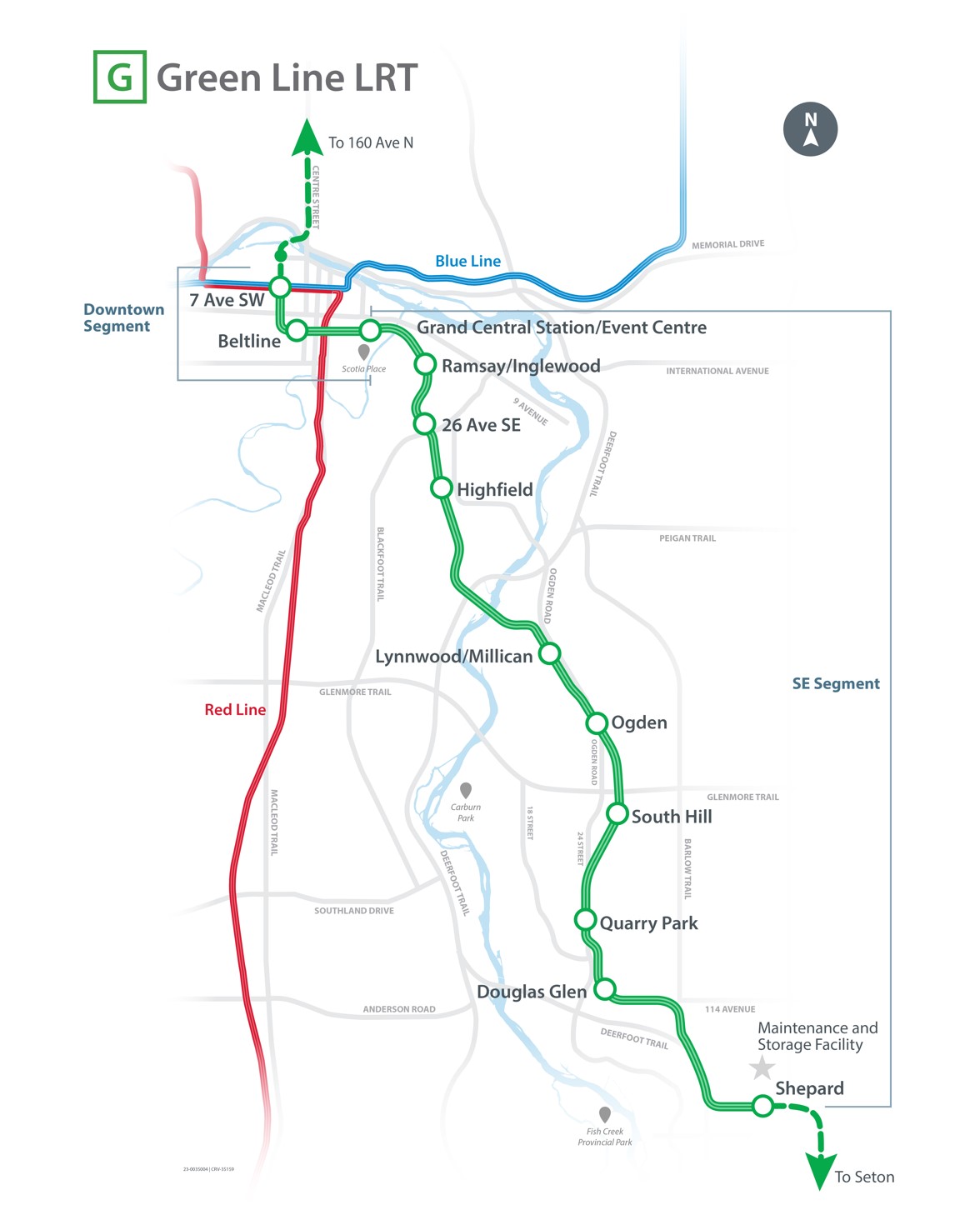
What is the budget?
Phase 1 of the Green Line LRT (from Shepard to 7 Avenue S.W.) has $6.248 billion in funding from The City of Calgary, Government of Alberta and Government of Canada.
Funding commitments by level of government:
- Canada: $1.641 billion
- Alberta: $1.702 billion
- Calgary: $2.905 billion
How much money has been spent to date?
Approximately $1.6 billion has spent over the past decade to advance the city’s most critical infrastructure project, which includes land acquisition, early works construction projects such as utility relocations, landfill remediations and initial bridge structures, the procurement of 28 new low floor light rail vehicles and the planning, due diligence and design that got the project ready to move into main construction.
How many people will ride the Green Line?
Opening day is projected for 2031 with almost 55,000 daily riders.
Who is overseeing this project?
The Green Line LRT - SE Project is a business unit under the Infrastructure Services department at The City of Calgary, reporting to Michael Thompson, General Manager. As part of the approved recommendations to Council, The City will collaborate with the Province on program governance and a delivery oversight committee comprised of equal representation from the Government of Alberta and the City of Calgary.
The Green Line Team is comprised of City of Calgary employees and private sector contractors with experience in delivering light rail transit and major infrastructure projects.
What are the benefits of the Green Line LRT?
Phase 1 of the Green Line LRT will bring considerable benefits to Calgarians, including:
- Shifting 4.8 million trips from vehicles to transit each year
- Easing congestion on roads and existing transit service
- Creating 20,000 direct and indirect jobs during construction
- Spurring residential and commercial development, including opportunities for up to114,000 new housing units within 800m of stations
- Reducing greenhouse gases by 37,000 tonnes annually
Construction and development
When could Calgarians expect to see the SE Segment built?
In summer 2025, construction began on the SE Segment from Shepard to Event Centre/Grand Central Station. This work includes 16 kilometres of twin LRT track, 10 stations with corresponding bus terminals, multiple bridge and utility structures, a new maintenance and storage facility, and the final delivery of the new low floor light rail vehicles.
Based on the current schedule, it should take approximately six years to complete construction.
When will the Green Line LRT open?
Opening day is expected to be in 2031.
Who is building the Green Line LRT?
Work on the Green Line LRT – SE Project will be awarded in multiple contracts, creating significant opportunities for local contractors and thousands of construction jobs for Calgarians. The SE Project contracting strategy for all works through to 2031 has been developed, with approximately $3 billion in construction contracts being put into the market in 2025 and 2026. For details on the contracting strategy and procurement timelines, visit our Supply and Contract Opportunities page.
Why does construction take so long?
The Green Line is the largest infrastructure investment in Calgary’s history. It is a megaproject and requires the construction of stations, tracks, multiple bridges and elevated guideways, a maintenance and storage facility for Light Rail Vehicles (LRVs), Park and Ride facilities and much more.
Comparing the scale and timeline to other LRT projects in Calgary:
- The first leg of Calgary’s LRT system spanned 12.5 kilometres from Anderson Station in the south to downtown with 16 stations and took four years to construct.
- The West LRT expansion from downtown to 69 Street Station spanned 8.2 kilometres of track, with six stations and took three years to construct.
Business support
How is the Green Line supporting businesses during construction?
Green Line has a Business Support Program with a team on-the-ground to keep businesses informed and prepare them for the impacts of nearby construction. The best way business owners can connect with Green Line and stay informed is to register your business with us.
Examples of how we support businesses include:
- Direct communication to provide updates on construction and planned disruptions.
- Ensuring safe access to businesses is maintained as regularly as possible, throughout construction.
- Developing initiatives to encourage Calgarians to support businesses, including coordinating with City programs such as the Seasonal Public Patio program and developing Green Line wayfinding, detour and “businesses open during construction” signage.
- Featuring local businesses on our social media channels and website.
- Meeting regularly with our Business Insights Panel to understand current challenges and concerns, and to share plans and ideas to support businesses.
- Encouraging staff, contractors and the public to support local businesses (our Ogden Local Business Guide).

Trains and safety
What's being done to ensure Green Line will be a safe transit system?
Building safe transit infrastructure and providing safe Light Rail Vehicles (LRVs) are top priorities and there is more information on our stations and LRV safety pages.
Once Green Line opens, it will be operated by Calgary Transit and The City of Calgary is committed to improving safety and security on the transit system. The Transit Public Safety page outlines steps being taken to improve transit safety.
The City is increasing staff, including Peace Officers, outreach teams and security guards, and making improvements to station lighting and surveillance. In May 2023, they also released a report on the potential of implementing a “closed system.”
Why did the Green Line choose a low-floor Light Rail Vehicle (LRV)?
Low-floor LRVs are now the preferred choice for new LRT systems across North America because they offer improved accessibility, enhanced vehicle and pedestrian safety, and the ability to integrate easily into the community.
With low-floor LRVs, train stations at street-level don’t need long ramps, stairs, or large platform structures. The low platforms are curb height (33 centimetres compared with 98 centimetres for high-floor trains), which allows for simpler station designs, resulting in cost savings when building the stations.
Can the Green Line LRVs share tracks with the Red and Blue lines?
The Urbos 100 low-floor LRVs will operate exclusively on Green Line. Due to the low-floor design, the station platforms on the Red and Blue Lines are too high. There are also differences with the existing electrical network that prevents the Green Line LRVs from running on the Red and Blue lines.
Future plans
When will the north extension (downtown to 160 Avenue N.) and south extension (Shepard to Seton) be built?
The full 46-kilometre vision for Green Line extends from Seton in the south to 160 Avenue N. The north and south extensions are currently unfunded, so we cannot estimate when they will be built. City Council will make the determination on future extensions as funding becomes available.
Stations from south to north include:
- Seton
- Hospital
- Auburn Bay/Mahogany
- McKenzie Towne
- Prestwick
- Shepard
- Douglas Glen
- Quarry Park
- South Hill
- Ogden
- Lynnwood/Millican
- Highfield
- 26 Avenue S.E.
- Ramsay/Inglewood
- 4 Street S.E.
- Centre Street S.
- 7 Avenue S.W.
- Eau Claire
- 9 Avenue N.
- 16 Avenue N.
- 28 Avenue N.
- 40 Avenue N.
- McKnight Boulevard
- 64 Avenue N.
- Beddington
- 96 Avenue N.
- North Pointe
- 144 Avenue N.
- 160 Avenue N.
Will the Green Line cross the Bow River via bridge or tunnel?
It was determined in 2019 that the best option was to build an LRT bridge over the Bow River, connecting Eau Claire station to Crescent Heights. City Council approved this plan in 2020. However, this work is outside the scope of Phase 1 construction.
More information about the preliminary planning and design of the Bow River Bridge is here.
Will Green Line connect to the airport?
Phase 1 will not connect to YYC Calgary International Airport but there are plans for an Airport Transit Connector linking both the Green Line and Blue Line to the airport. Visit our future extensions page for more information.
In July 2023, the City of Calgary announced a study to identify the optimal rail connection and alignment between downtown Calgary and the airport. The study will include a ridership review, and development and evaluation of different alignment scenarios. For more information, visit the Airport Transit Study page.
Does Green Line align with the Government of Alberta’s rail plan?
Yes. It is a requirement for Provincial funding to ensure that the Event Centre Station is integrated into their plans for the future Grand Central Station.
The phased approach to deliver the entire 46-kilometre vision for Green Line provides the backbone for future LRT expansions to the south and north, regional transportation links and opportunities identified in the Alberta Passenger Rail Master Plan. Green Line is an essential element of several Council-approved long-term strategies - The City’s RouteAhead 30-year Strategic Plan for Transit in Calgary, Municipal Development Plan and Calgary Transportation Plan, Greater Downtown Plan, Housing Strategy and 2020 Sustainability Direction and Council Priorities.

Resource Library
Many of the reports and documents below provide progress updates, some detail major milestones and recommendations that, once approved, form the basis for decisions.
Since 2015, the Green Line LRT project has delivered hundreds of reports to Council and the Green Line Board.
Reports, frameworks & milestones
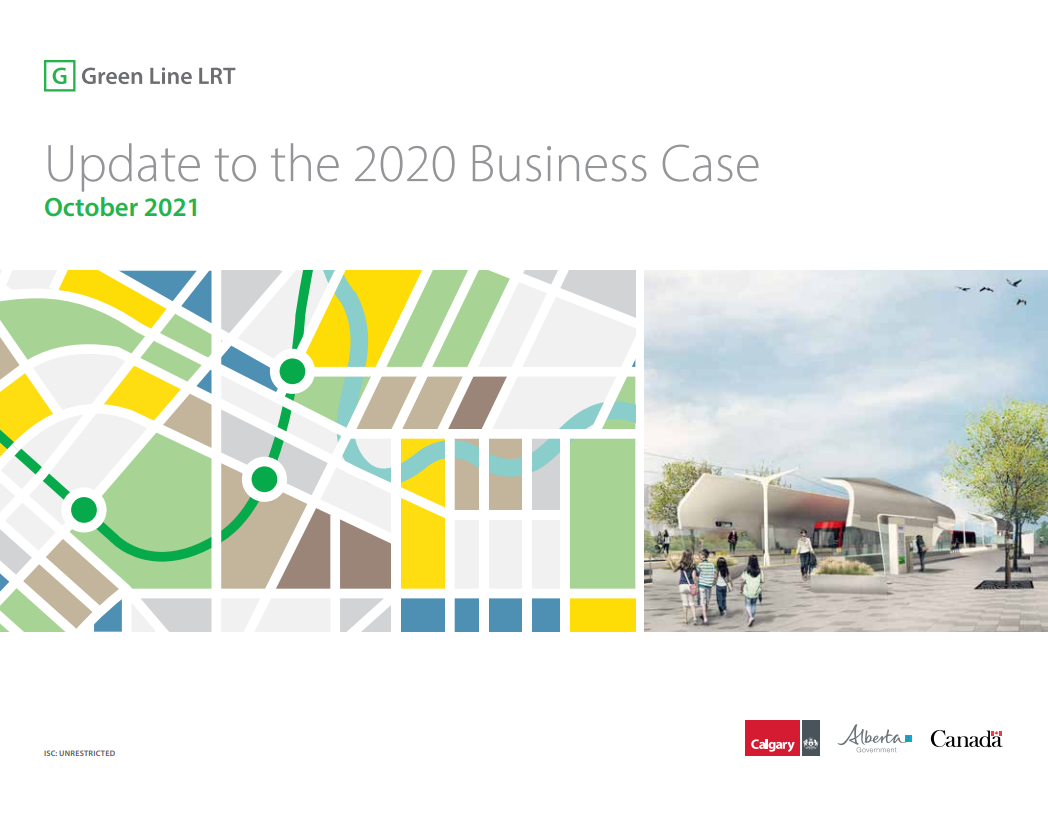
Update to the 2020 Business Case (2021)
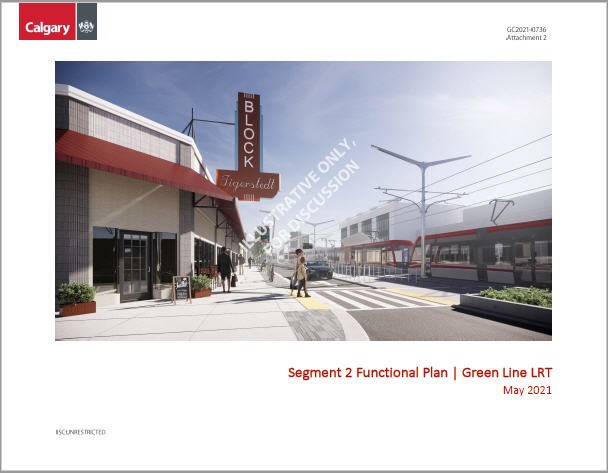
Segment 2 Functional Plan (2021)

Reviewing the Business Case for COVID-19 & Economic Recovery (2021)
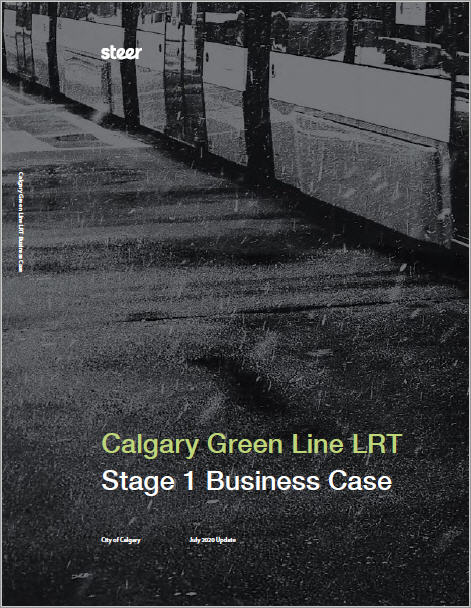
Calgary Green Line LRT Stage 1 Business Case (2020)

Updated Segment 2 (16 Avenue N to Elbow River) Alignment, Station Location and Concept Plan (2020) |
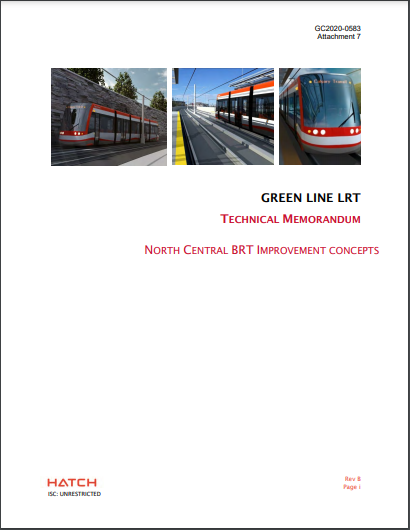
North Central BRT Improvement Concepts (2020)
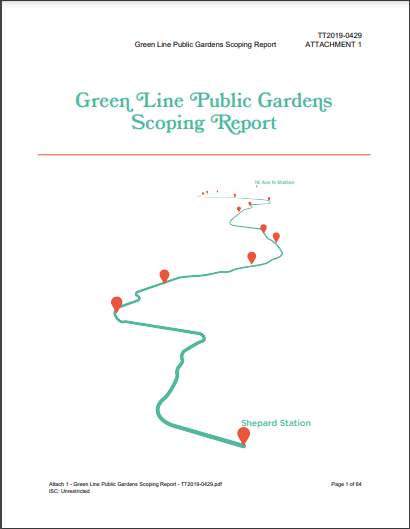
Green Line Public Gardens Scoping Report (2019)
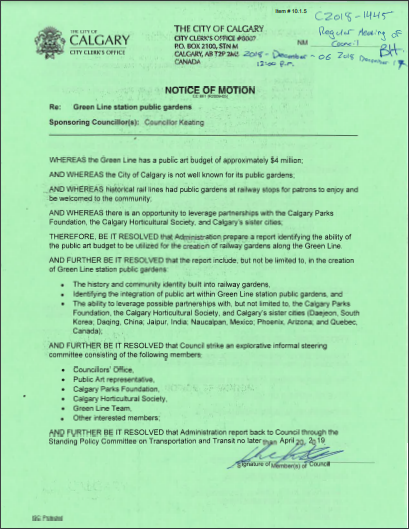
Notice of Motion – Green Line Station Public Gardens (2018)
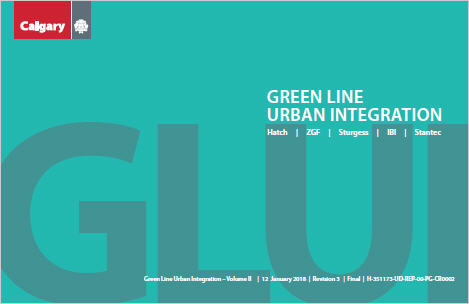
Green Line Urban Integration - Volume 2 (2018)
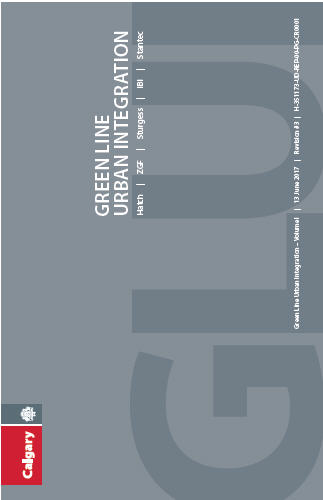
Green Line Urban Integration - Volume 1 (2017)
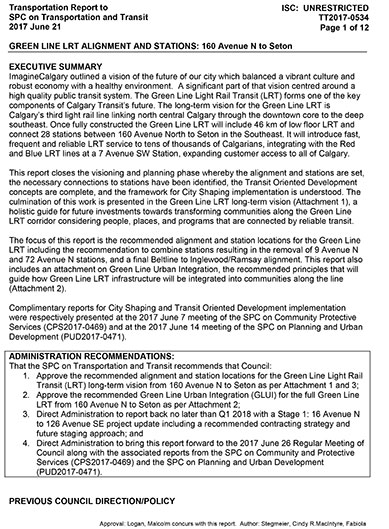
Council Report: Green Line LRT Alignment and Stations: 160 Avenue N to Seton (2017)
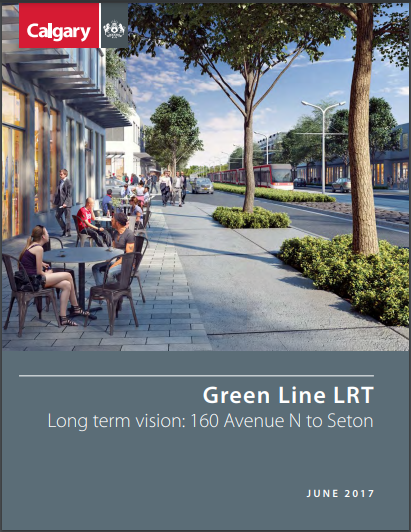
Green Line LRT Long Term Vision: 160 Avenue N to Seton (2017)
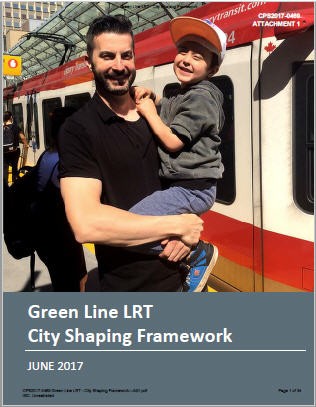
Green Line LRT City Shaping Framework (2017)
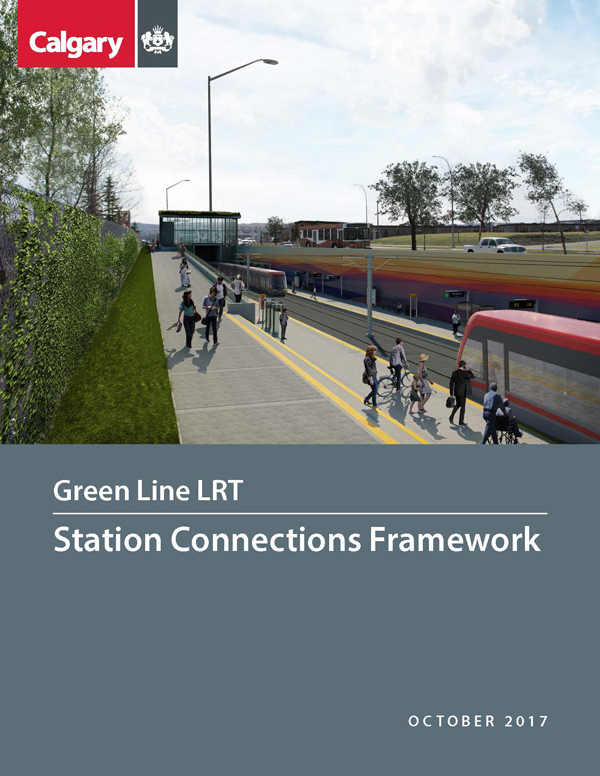
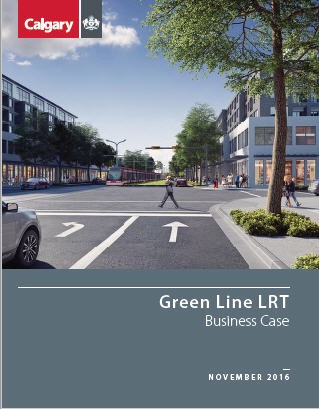
Green Line LRT Business Case (2016)
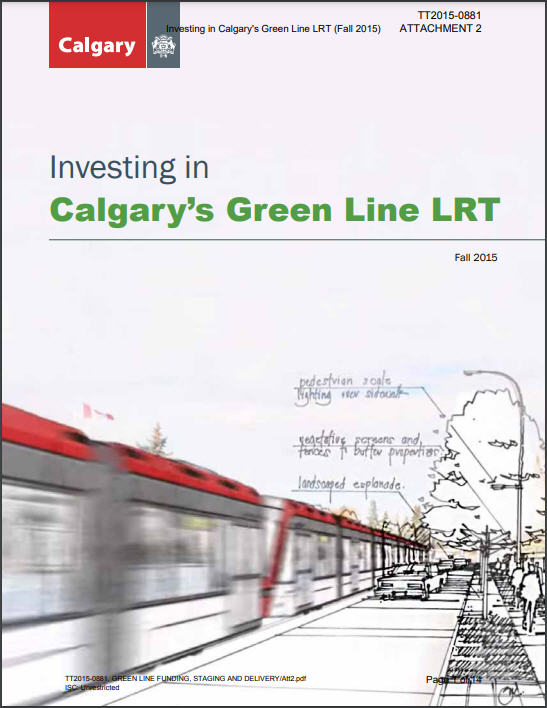
Investing in Calgary's Green Line LRT (2015)
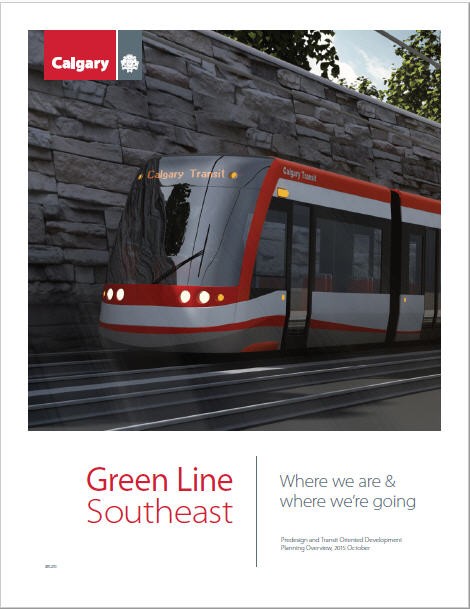
Green Line Southeast – Where we are & where we’re going (2015) |
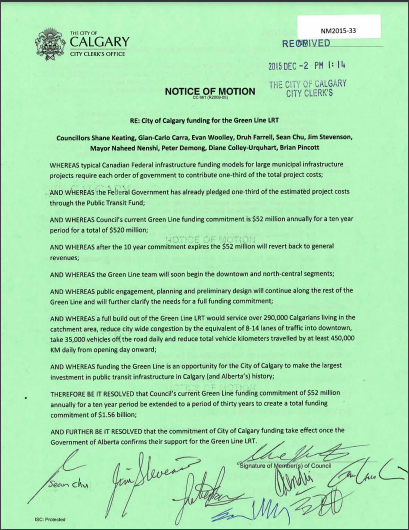
Notice of Motion – City of Calgary funding for the Green Line LRT (2015)
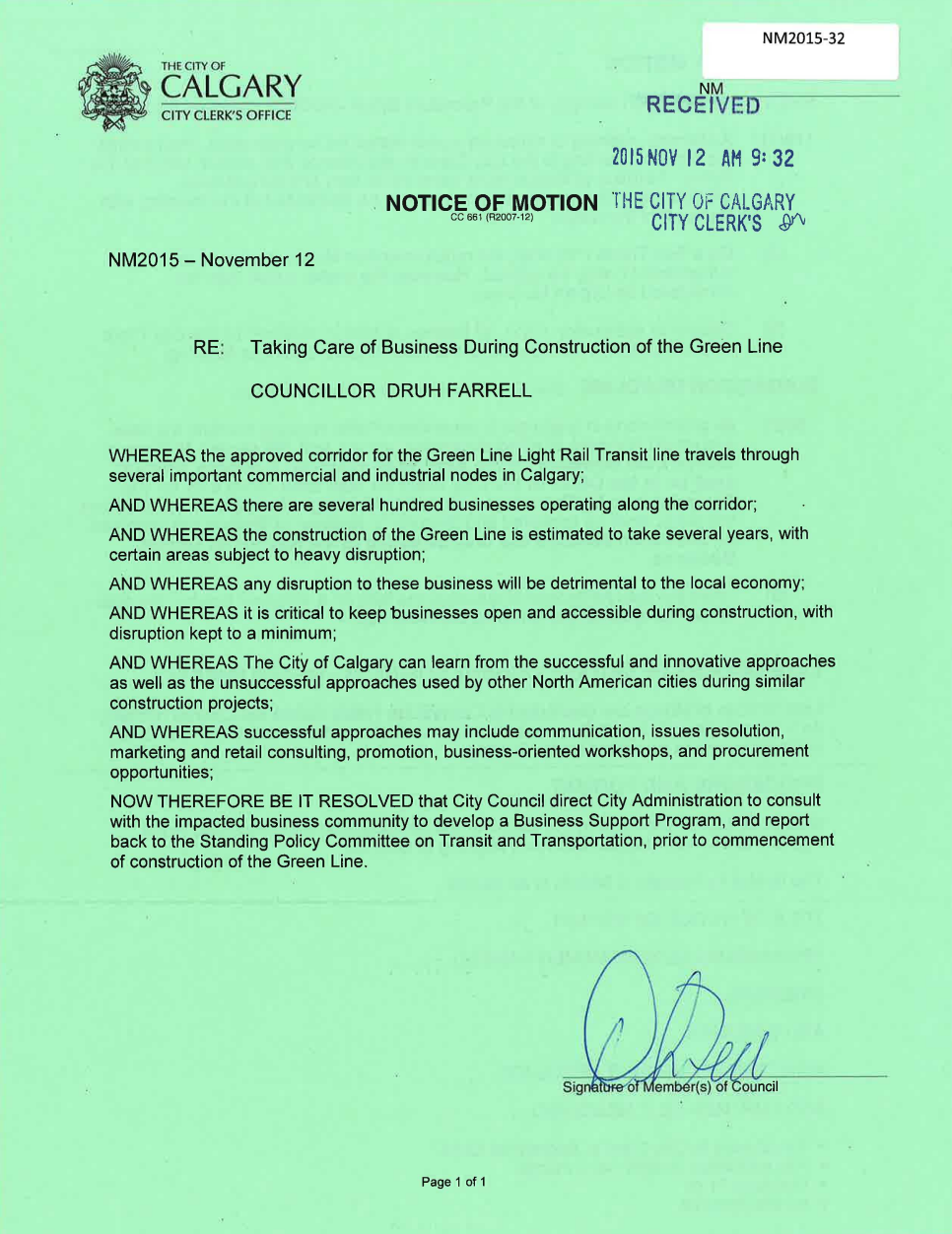
Notice of Motion - Taking care of business during construction of the Green Line (2015)
Public Engagement "What we heard" reports
- Business Support Program – What We Heard Report (2021)
- Segment 2 Functional Planning Final Engagement Summary (2021)
- Phase 2: Evaluate Bow River LRT Bridge What We Heard Report (2021)
- Phase 1: Envision (All Projects) What We Heard (2020)
- Green Line LRT What We Heard Report Updated Stage 1 Alignment January 29 (April 2020)
- Above Grade Report Back (April 2018)
- At Grade Report Back (April 2018)

